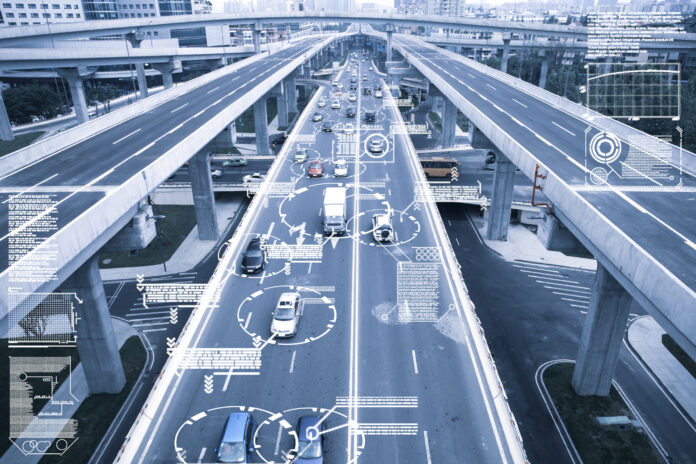
A transformative force is shaping the way that modern vehicles interact with the world around them. It’s called Vehicle-to-Everything (V2X) communication, and it holds the promise of safer, more efficient, and smarter transportation systems. In this article, we embark on a journey to explore the road ahead, where V2X technology is at the forefront of innovation, connecting cars, infrastructure, and beyond.
The V2X Revolution Unveiled
V2X communication is a dynamic and interconnected network that allows vehicles to communicate with various entities in their environment. It encompasses several key aspects of communication:
- Vehicle-to-Vehicle (V2V): This aspect enables cars to communicate with one another. Vehicles share real-time data on speed, location, and direction, enhancing safety by anticipating potential collisions and enabling cooperative driving.
- Vehicle-to-Infrastructure (V2I): V2I communication connects vehicles to the transportation infrastructure, including traffic lights, road signs, and even road surfaces. It provides information on traffic conditions, signal timing, and upcoming hazards, helping drivers make informed decisions.
- Vehicle-to-Pedestrian (V2P): V2P communication involves interactions between vehicles and pedestrians or cyclists carrying connected devices. This ensures that vulnerable road users are also part of the safety network.
- Vehicle-to-Network (V2N): V2N communication extends the network to include cloud-based services and data centers. It allows vehicles to access real-time information, such as weather updates, traffic forecasts, and software updates.
4 Ways V2X is Shaping the Future of Transportation
1. Enhanced Safety
V2X communication is a game-changer in road safety. With V2V communication, vehicles can exchange information about their speed, position, and potential hazards. For instance, if a car suddenly brakes on a highway, it can transmit this information to nearby vehicles, enabling them to react faster and prevent accidents. V2I communication, on the other hand, allows vehicles to anticipate traffic light changes, reducing the likelihood of red-light violations and collisions.
Real-world Example: Audi’s Traffic Light Information system connects select Audi models to traffic light infrastructure. It provides real-time traffic light status, enabling vehicles to optimize speed for green lights, reducing emissions and improving traffic flow.
2. Improved Traffic Flow
V2X technology helps alleviate traffic congestion by optimizing traffic flow. With V2I communication, traffic lights can adjust their timing based on real-time traffic conditions. This dynamic control reduces unnecessary stops and starts, making traffic more fluid and eco-friendly.
Real-world Example: The city of Las Vegas implemented a V2I system that adjusts traffic light timings based on traffic flow. This has led to a 40% reduction in travel time and a significant decrease in carbon emissions.
3. Empowering Autonomous Vehicles
V2X communication is a crucial building block for autonomous driving. Self-driving cars rely on a constant flow of information from the surrounding environment. V2X provides them with real-time data on traffic, road conditions, and potential hazards. It’s like giving them an extra set of eyes on the road.
Real-world Example: Waymo’s autonomous ride-hailing service in Phoenix, Arizona showcases IoT-powered autonomous mobility. Waymo’s vehicles, equipped with sensors and AI, offer rides to the public without human drivers, demonstrating the potential of autonomous mobility services.
4. Sustainable Transportation
V2X technology can contribute to sustainability efforts by reducing fuel consumption and emissions. Smoother traffic flow, facilitated by V2I communication, leads to fewer idling vehicles, while V2N communication can provide real-time data on nearby charging stations for electric vehicles.
Real-world Example: The city of Stockholm in Sweden implemented a congestion charge system that uses V2X technology. It reduced traffic congestion by 22%, lowering fuel consumption and emissions.
Applications of V2X Communication
Beyond its foundational benefits, V2X communication has a wide range of applications that are reshaping the transportation landscape:
Emergency Vehicle Alerts
V2X enables emergency vehicles to communicate their approach to nearby vehicles, reducing the risk of collisions and ensuring a clear path for first responders.
Construction Zone Warnings
V2X technology can provide real-time alerts to drivers approaching construction zones, enhancing safety for both workers and motorists.
Road Condition Monitoring
V2X can transmit data about road conditions, including ice, potholes, and debris, to help drivers navigate safely.
Intersection Collision Avoidance
V2X-equipped vehicles can alert drivers of potential collisions at intersections, even when other vehicles are out of sight.
Pedestrian Safety
V2P communication ensures that pedestrians carrying connected devices can be detected by vehicles, reducing the risk of accidents.
Parking Assistance
V2X technology can guide drivers to available parking spaces and facilitate contactless payments for parking.
Fleet Management
Businesses can use V2X to optimize routes, monitor vehicle health, and enhance the efficiency of their fleets.
Challenges and the Road Ahead
While V2X communication holds immense promise, it’s not without its challenges. Ensuring interoperability, addressing cybersecurity concerns, and navigating regulatory frameworks are critical hurdles that need to be overcome for widespread adoption. However, the potential benefits in terms of safety, efficiency, and sustainability make these challenges worth tackling.
As we journey forward, the road ahead is paved with innovation and opportunity. V2X communication is not merely a technological advancement; it’s a transformative force that has the potential to redefine the way we move. In an increasingly interconnected world, where data flows seamlessly between vehicles, infrastructure, and beyond, V2X communication is a beacon guiding us toward a safer, smarter, and more sustainable future of transportation. The road ahead is bright, and V2X is the compass that will lead us there.




